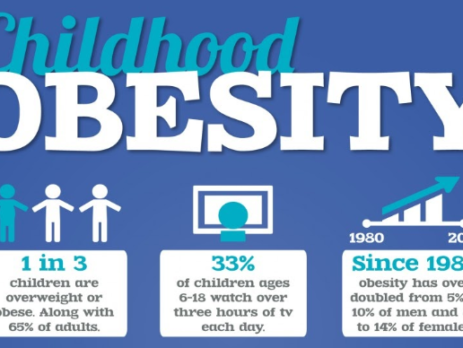The Need to Play & Stay Active
The research is clear. Americans are unhealthy and out of shape – and we’re not alone; most of the world is going in this direction. The trend is starting much younger, which is most alarming.
Why is this happening, and how can we reverse the trend – not just in socio-economic pockets, but everywhere? How can we make this a bigger priority than all of the instant gratifications that steal our attention, time and money?
Basement Sports is working closely with Non-Profits (like Sips & Kicks Foundation), communities, business and political leaders across the world to address this issue at its roots, and come up with creative solutions – like the Basement Sports product line – to address them.
Here are just a few of the alarmingly negative trends that motivate us to bring new ideas, products and programs to the table to get people – especially kids – more active every day.
HEALTH & OBESITY TRENDS
- 9.4 % of children ages 2 to 5 already have obesity.
- The obesity rate for children ages 6 to 11 has also more than quadrupled during the past 40 years – from 4.2 to 17.4 % – as well as tripled for adolescents ages 12 to 19, climbing from 4.6 to 20.6 %, according to the National Health and Nutrition Examination Survey (NHANES).
- At 25.8%, Hispanic children and adolescents between the ages of 2 and 19 had the highest prevalence of obesity between 2015 and 2016, according to the National Center for Health Statistics.
- In the U.S., the prevalence of obesity was 18.5% among U.S. youth in 2015-2016, affecting about 13.7 million children and young people, according to the Centers for Disease Control and Prevention.
- A third of the children born in 2000 in this country will develop diabetes during their lifetime.
- An overweight adolescent has a 70 percent chance of becoming an overweight or obese adult.
- Researchers from the University of Cincinnati in 2008 estimated the cost of medical care to diagnose and treat obesity and its associated health issues to be about $147 billion annually. In 2012, the total estimated cost of diagnosed diabetes was $245 billion, including $176 billion in direct medical costs and $69 billion in decreased productivity.
- About half of all American adults—117 million individuals—have one or more preventable chronic diseases, many of which are related to poor quality eating patterns and physical inactivity. These include cardiovascular disease, high blood pressure, type 2 diabetes, some cancers, and poor bone health. More than two-thirds of adults and nearly one-third of children and youth are overweight or obese.
- Children who are obese are at risk for developing premature heart disease, the American Heart Association reports. A study of nearly 2.3 million people monitored over the course of 40 years found that the risk of dying from heart disease was two to three times higher if they had been overweight or obese as teens.
- Overweight rates have been climbing over the past few decades among children. About 9 million (or roughly one in six kids ages 6–19) were overweight in 2004 – more than triple the number of overweight children in 1980. Given current trends, one in three children born in 2000 will develop diabetes over the course of a lifetime
- Nearly 45% of children living in poverty are overweight or obese compared with 22% of children living in households with incomes four times the poverty level. For children with disabilities, obesity rates are approximately 38% higher than for children without disabilities.
- Empty calories from added sugars and solid fats contribute to 40% of total daily calories for 2–18 year olds and half of these empty calories come from six sources: soda, fruit drinks, dairy desserts, grain desserts, pizza, and whole milk
- The Centers for Disease Control recently reported an estimated 1 in 5 children in the United States, ages 12-18, are living with prediabetes — increasing their risk of developing type 2 diabetes as well as chronic kidney disease, heart disease and stroke.
CHILDHOOD SEDENTARY BEHAVIORS
SOURCE: HHS – PRESIDENT’S COUNCIL ON SPORTS, FITNESS AND NUTRITION
- Approximately 33% of children and youth aged 6-19 years report engaging in 2 hours or less of screen time per day (2015-16 NHANES)
- Approximately 43% of high school-aged students report using a computer or other electronic device for more than 3 hours per day (2017 YRBSS).
- The percentage of 6 to 12 year old children who spent time outdoors decreased from approximately 16% in 1997 to 10% in 2003 (Child Development Supplement to the Panel Study of Income Dynamics).
- Children now spend more than seven and a half hours a day in front of a screen (e.g., TV, video games, computer).
- Only 6 states (Illinois, Hawaii, Massachusetts, Mississippi, New York and Vermont) require physical education in every grade, K-12.
- 28.0% of Americans, or 80.2 million people, aged six and older are physically inactive.
- US teens spend an average of more than seven hours per day on screen media for entertainment, and tweens spend nearly five hours, the The Common Sense Census: Media Use by Tweens and Teens, 2019 report finds — and that doesn’t include time spent using screens for school and homework.
- Fifty-three percent of kids have their own smartphone by age 11, and nearly 70% have one by age 12. Smartphone ownership among tweens increased from 24% in 2015 to 41% in 2019, and from 67% to 84% among teens. Among 8-year-olds, nearly 1 in 5 now have their own smartphone.






Leave a Reply